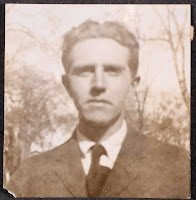 We just acquired a copy of Pauline Hopkins's Contending Forces: A Romance Illustrative of Negro Life North and South (Boston: Colored Co-operative Publishing Co., 1900). As the title suggests, this is a novel bent on affecting social change. Hopkins was a prolific and popular writer of the turn of the century. Much of her work appeared in Colored American Magazine, where she worked as an editor, and she published several full-length novels. Her writings positioned her as a major public intellectual of the time.
We just acquired a copy of Pauline Hopkins's Contending Forces: A Romance Illustrative of Negro Life North and South (Boston: Colored Co-operative Publishing Co., 1900). As the title suggests, this is a novel bent on affecting social change. Hopkins was a prolific and popular writer of the turn of the century. Much of her work appeared in Colored American Magazine, where she worked as an editor, and she published several full-length novels. Her writings positioned her as a major public intellectual of the time.What makes our copy particularly interesting is two letters laid in, one, a fair copy written by Emma S. Burnett of Kalispell, Montana, praising Hopkins for the book.
I have just finished reading your most interesting book "Contending Forces." it is grand. I wish every man and woman in the universe might read it. Especially of the more favored race for surely then they could not help but look upon us with more favor. We are living almost at the two extremes of this country yet your forceful words have come to us on the western side of the Rockies. I shall do all I can to have my friends in this section secure a copy as I feel that it will be food & strength for them. One of your own townsmen whom I met while visiting Boston last Sept sent me the book. I will once more pass my tribute of thanks to you for the good work you have done for the race.Hopkins's answer lies along side. In a neat script (she earned her living for a time as a stenographer at M.I.T.), she thanks Burnett for her words of encouragement and answers in the rhetoric of struggle and purpose:
Sometimes one becomes discouraged and is unable to see any good accomplished by the most faithful work. Your letter found me at such a time, and it has strengthened me to press forward in the good fight that we are all waging against wrong and oppression.The voices of the two women united in cause, one in Boston, the other in Montana, help to carry today's reader into the social world that the text was responding to and trying to change.
You can see it by asking for Rare PS1999.H4226 1900.




